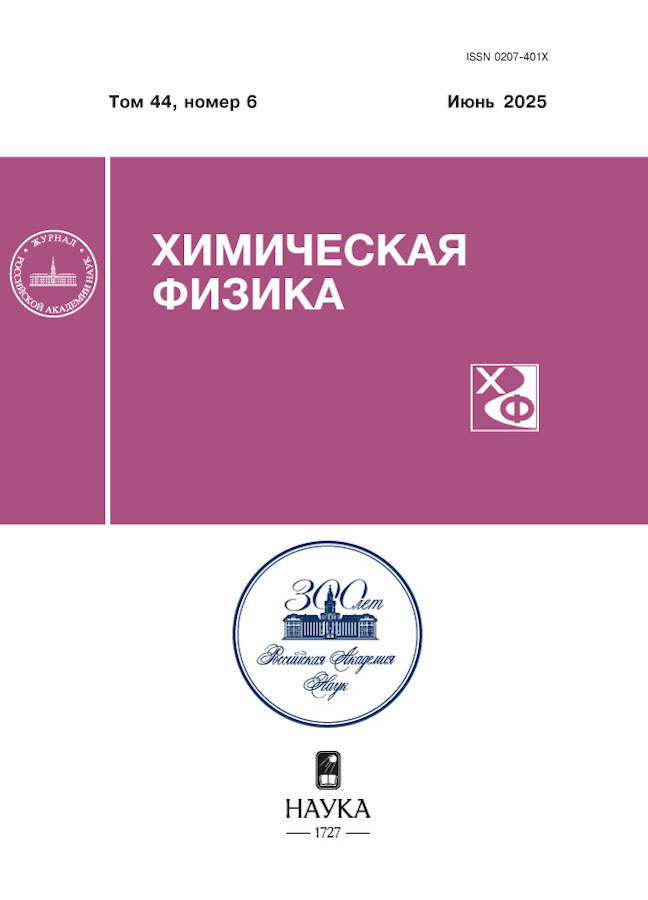Microstructure of Ferritic-Martensitic Steel Irradiated by Krypton Ions
- Authors: Staltsov M.S.1, Chernov I.I.1, Dikov A.S.2, Dikova L.A.2, Akaev S.O.2
-
Affiliations:
- MEPhI National Research Nuclear University
- Institute of Nuclear Physics of the Republic of Kazakhstan
- Issue: Vol 44, No 6 (2025)
- Pages: 67-74
- Section: Химическая физика экологических процессов
- URL: https://vestnik-pp.samgtu.ru/0207-401X/article/view/686547
- DOI: https://doi.org/10.31857/S0207401X25060051
- ID: 686547
Cite item
Abstract
The results of the microstructure development study of ferritic/martensitic steel of the 12Cr type are presented. The steel samples were irradiated at 350 °С by 300 keV 84Kr15+ ions up to a fluence of 1 ∙1021 m-2 in a vacuum of about 7 ⋅ 10-4 Pa. The experiment was carried out in relation to the storage of spent nuclear fuel for conditions of gaseous fission products introduction into the fuel cladding. It has been established that krypton implantation develops approximately the same microstructure regardless of the initial state of the sample (conventional heat treatment, namely – normalization followed by high tempering, or annealing at 350 °C for 70 h). Gas porosity is formed in the steel, the features of its development are studied by the depth of the path of the introduced ions using cutting out of TEM objects perpendicular to the irradiated surface. The steel surface is strongly oxidized during irradiation, apparently due to the ballistic effect (“driving” of oxygen atoms into the sample by bombarded ions due to insufficiently vacuum in the target area), since the non-irradiated side of the sample did not oxidize when held for 70 h at 350 °С during irradiation of first side. Based on the experimental results obtained, it was concluded that during storage of spent nuclear fuel under standard conditions stresses should not arise in the cladding of spent fuel rods due to gas swelling.
Full Text
About the authors
M. S. Staltsov
MEPhI National Research Nuclear University
Email: i_chernov@mail.ru
Russian Federation, Moscow
I. I. Chernov
MEPhI National Research Nuclear University
Author for correspondence.
Email: i_chernov@mail.ru
Russian Federation, Moscow
A. S. Dikov
Institute of Nuclear Physics of the Republic of Kazakhstan
Email: i_chernov@mail.ru
Kazakhstan, Almaty
L. A. Dikova
Institute of Nuclear Physics of the Republic of Kazakhstan
Email: i_chernov@mail.ru
Kazakhstan, Almaty
S. O. Akaev
Institute of Nuclear Physics of the Republic of Kazakhstan
Email: i_chernov@mail.ru
Kazakhstan, Almaty
References
- Kalin B.A., Platonov P.A., Tuzov Yu.V. et al. Physical Materials Science. V. 6. Structural Materials for Nuclear Engineering. M.: Publ. House of NRNU MEPhI, 2021.
- Séran J.-L., Le Flem M. // Structural Materials for Generation IV Nuclear Reactors / Ed. Yvon P. Elsevier, 2020. P. 285.
- Adamov E.O., Arutyunyan R.V., Bolshov L.A. et al. White Book of Nuclear Power. Closed NFC with Fast Reactors / Ed. Adamov E.O. M.: Publ. House of JSC NIKIET, 2020.
- Mitrofanova N.M., Tselishchev A.V., Ageev V.S. et al. // Izv. vuzov. Yadernaya Energetika. 2011. № 1. P. 211.
- Tselishchev A.V., Ageev V.S., Budanov Yu.P. et al. // Atomnaya Energiya. 2010. V. 108. Issue 4. P. 217.
- Poplavskiy V.M., Tsybulya A.M., Khomyakov Yu.S. et al. // Ibid. 2010. V. 108. Issue 4. P. 206.
- Litovchenko I.Yu., Polekhina N.A., Tyumentsev A.N. et al. // J. Nucl. Mater. 2014. V. 455. P. 665.
- Chernov V.M., Leontyeva-Smirnova M.V., Mozhanov E.M. et al. // ZhTF. 2016. V. 86. Issue 2. P. 53.
- Leontyeva-Smirnova M.V., Agafonov A.N., Yermolaev G.N. et al. // Perspektivnye Materialy. 2006. № 6. P. 40.
- Panin A.V., Chernov V.M., Leontieva-Smirnova M.V., Melnikova E.A. // J. Nucl. Mater. 2009. V. 386–388. P. 466.
- Ioltukhovskiy A.G., Velyukhanov V.P., Zelenskiy G.K. et al. Low-activating, corrosion- and radiation-resistant chromium steel: Patent RU 2 325 459 C2 RF // B.I. 2008. № 15.
- Amangeldy N., Burtebayev N., Bugybayev E. et al. // Vestn. NNC RK. 2009. Issue 4. P. 15.
- Utke I., Hoffmann P., Melngailis J. // J. Vacuum Science and Technology. Ser. B. 2008. V. 26. № 4. P. 1197.
- Staltsov M.S., Chernov I.I., Kalin B.A. Helium in Structural Materials of Nuclear and Thermonuclear Reactors: Educational-methodical manual. M.: Publ. House of NRNU MEPhI, 2021.
- Zelenskij V.F., Nekludov I.M., Ruzhitskij V.V. et al. // J. Nucl. Mater. 1987. V. 151. P. 22.
- Was G.S., Wharry J.P., Wirth B.D., Frisbie B. // Ibid. 2011. V. 411. P. 41.
- Pechenkin V.A., Chernova A.D., Molodtsov V.L. et al. // Atomnaya Energiya. 2014. V. 116. Issue 5. P. 251.
- Staltsov M.S., Chernov I.I., Dikov A.S., Ivanov I.A. // Nucl. Instrum. Methods Phys. Res., Sect. B. 2021. V. 491. P. 59.
- Staltsov M.S., Chernov I.I., Dikov A.S. et al. // Proc. of the XXXI Int. Conf. “Radiation Physics of Solid State”. M.: Publ. House of FSBSI “NIIPMT”, 2021. P. 33.
- Reshetnikov F.G., Bibilashvili Yu.K., Golovin I.S. et al. Development, Production and Operation of Fuel Elements for Power Reactors. M.: Energoatomizdat, 1995. Pt. 1.
Supplementary files
















